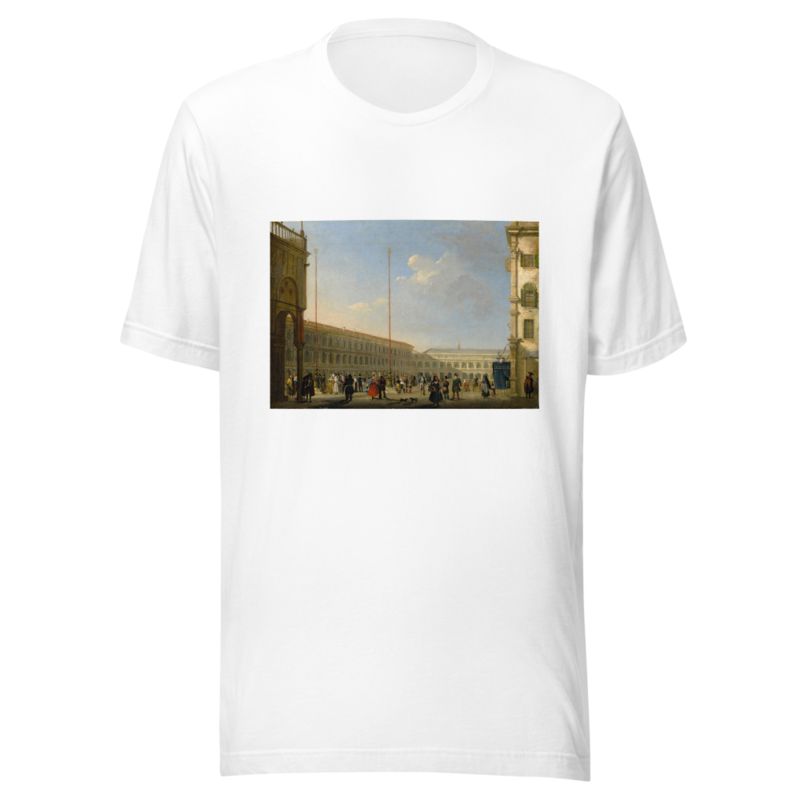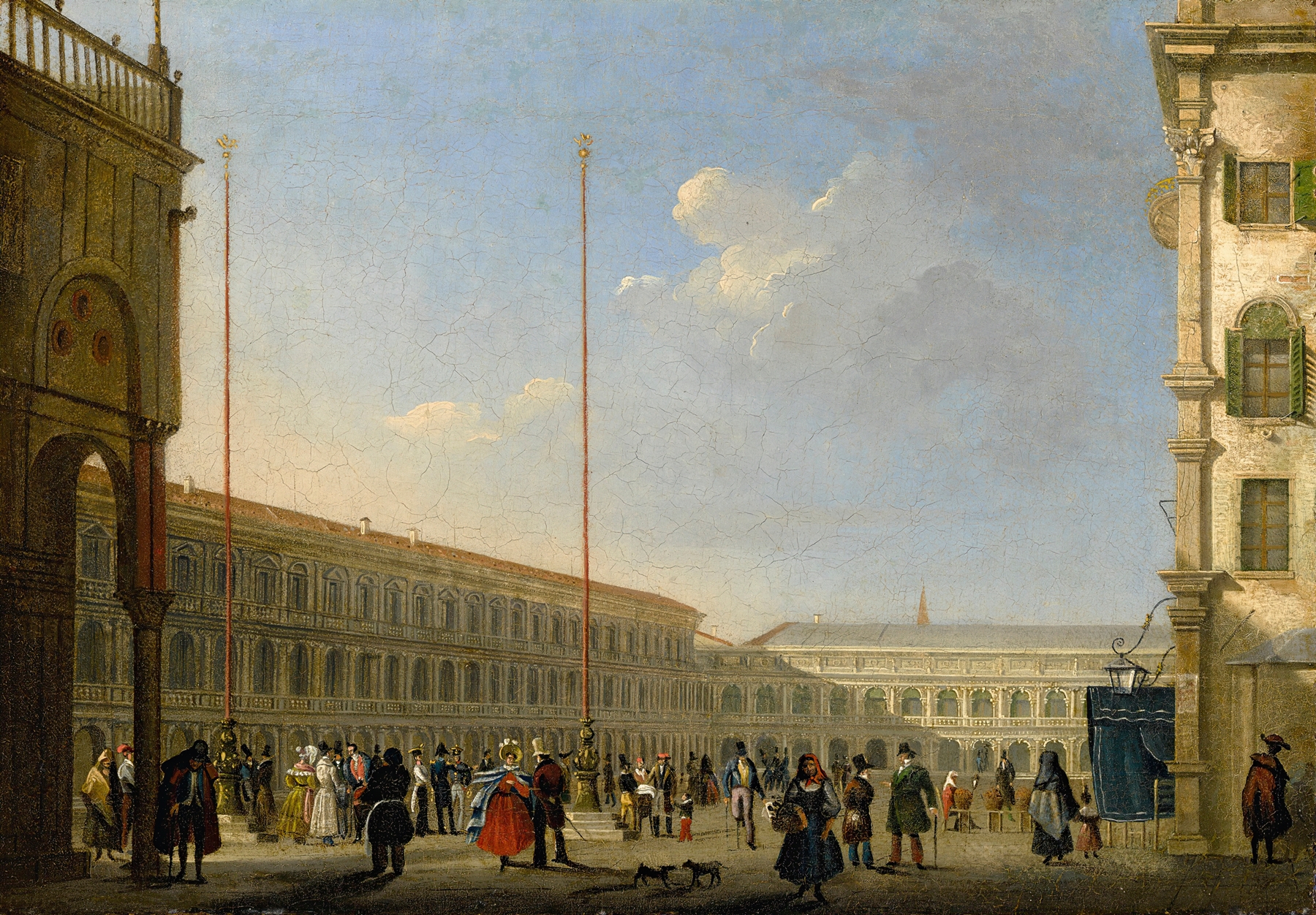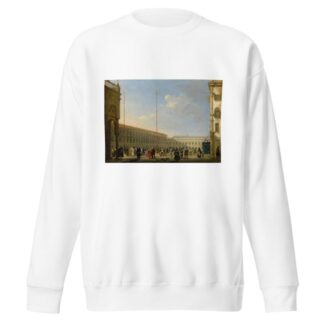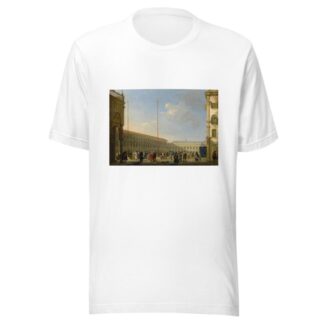Description
Venice, A View Of Piazza San Marco From Piazzetta Dei Leoncini by Giuseppe Canella printed on a T-Shirt
About the T-Shirt
Regular fit
Standard length, the fabric easily gives into movement
Casual wear
A classic, everyday option loved by our customers
Side-seamed
Constructed by sewing two parts together, creating a fitted look
The Unisex Staple T-Shirt feels soft and light with just the right amount of stretch. It’s comfortable and flattering for all. We can’t compliment this shirt enough–it’s one of our crowd favorites, and it’s sure to be your next favorite too!
- Solid colors are 100% Airlume combed and ring-spun cotton
- Ash color is 99% combed and ring-spun cotton, 1% polyester
- Heather colors are 52% combed and ring-spun cotton, 48% polyester
- Athletic and Black Heather are 90% combed and ring-spun cotton, 10% polyester
- Heather Prism colors are 99% combed and ring-spun cotton, 1% polyester
- Fabric weight: 4.2 oz./yd.² (142 g/m²)
- Pre-shrunk fabric
- 30 singles
- Side-seamed construction
- Tear-away label
- Shoulder-to-shoulder taping
- Blank product sourced from Nicaragua, Mexico, Honduras, or the US
Giuseppe Canella (1788 – 1847)
Giuseppe Canella, also referred to as Giuseppe Canella the Elder, was an Italian painter.
Initially trained by his father Giovanni, an architect, fresco painter and set designer, Giuseppe Canella started out producing stage sets and decorating stately homes in Verona and Mantua. His brother, Carlo Canella, was also a painter. It may have been under the influence of Pietro Ronzoni, a landscape painter of international renown active in Verona, that he took up landscape painting. The first views were not produced until 1815, after a short stay in Venice. After making his debut at the Fine Art Exposition at the Brera Academy of 1818, he made a long journey through Spain, the Netherlands and France for study purposes.
The set of 13 landscapes shown at the Expositions at the Brera in 1831 proved a great success with the public and critics alike, not least due to the fame achieved in Paris with works exhibited in the Salons, commissions from Louis Philippe of Orleans and the award of a gold medal in 1830. He returned to Milan in 1832 and devoted his energies to urban views characterised by an interest in the events of contemporary life and an atmospheric form of portrayal in evident competition with Giovanni Migliara. Landscape came to predominate as from 1835 with subjects drawn from the Lombard countryside and lakes. The focus on poor and humble aspects of life formed part of the artist’s fundamental naturalism and coincided with a moralistic approach derived from the novelist Alessandro Manzoni. Crucial importance attaches in the artist’s mature period to his trip to Rome and Naples in 1838–39.
Among his pupils or painters influenced by Canela were Felice Giuseppe Vertua, Constantino Prinetti, and Giovanni Renica. His son, Giuseppe Canella the Younger (Venice, 1837 – Padoa, 1913), was also a painter.






Reviews
There are no reviews yet.